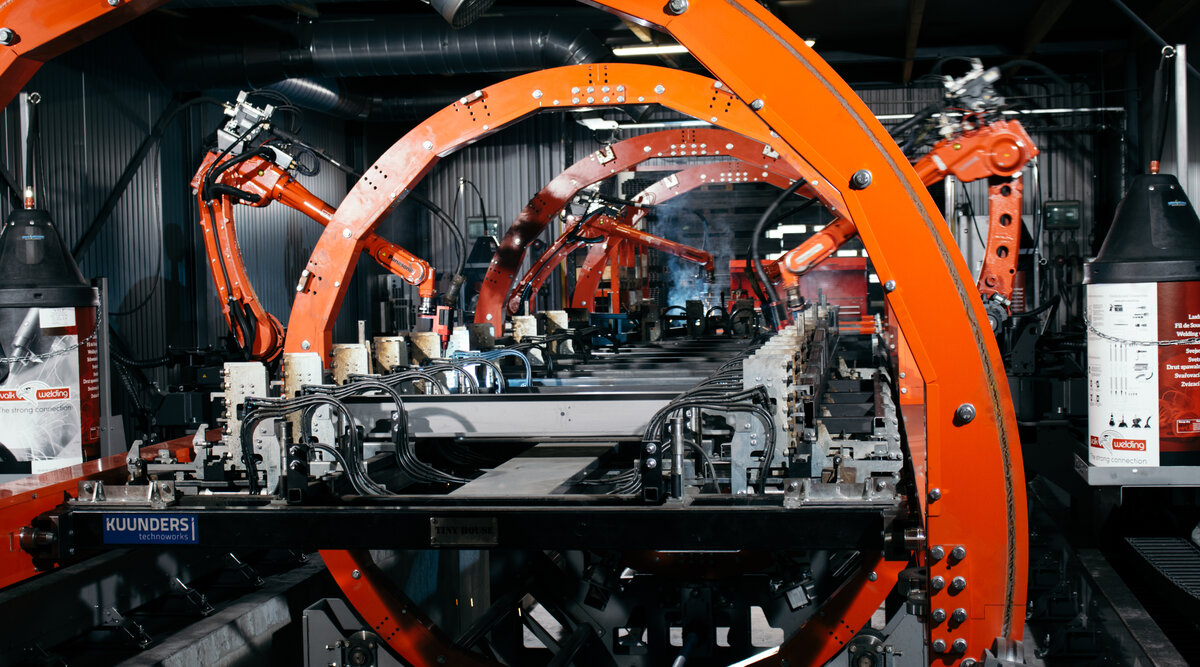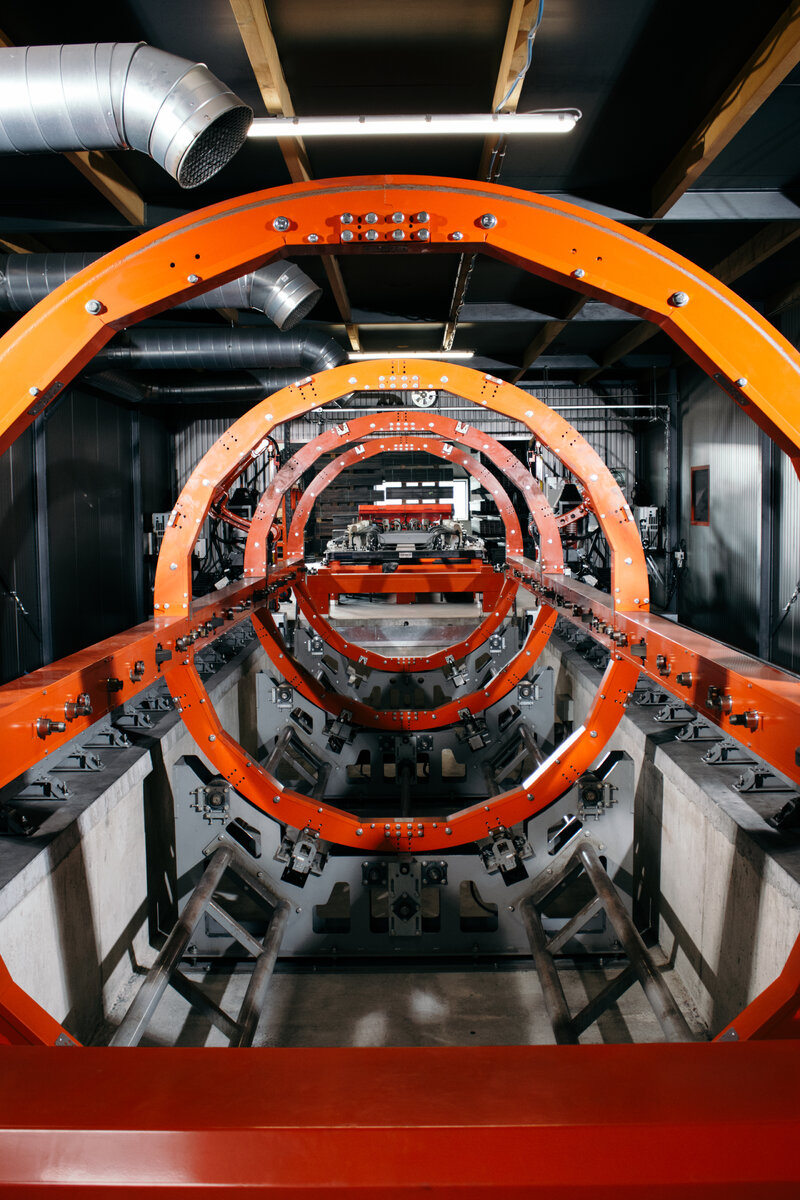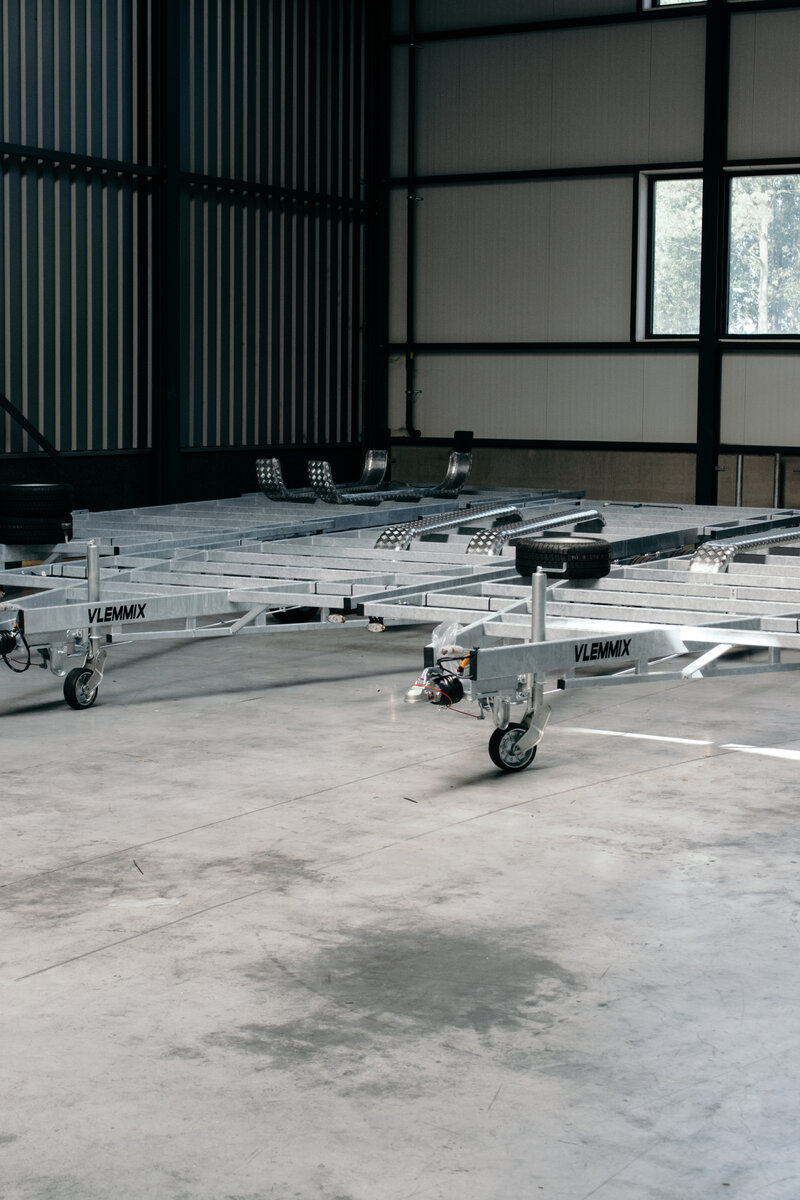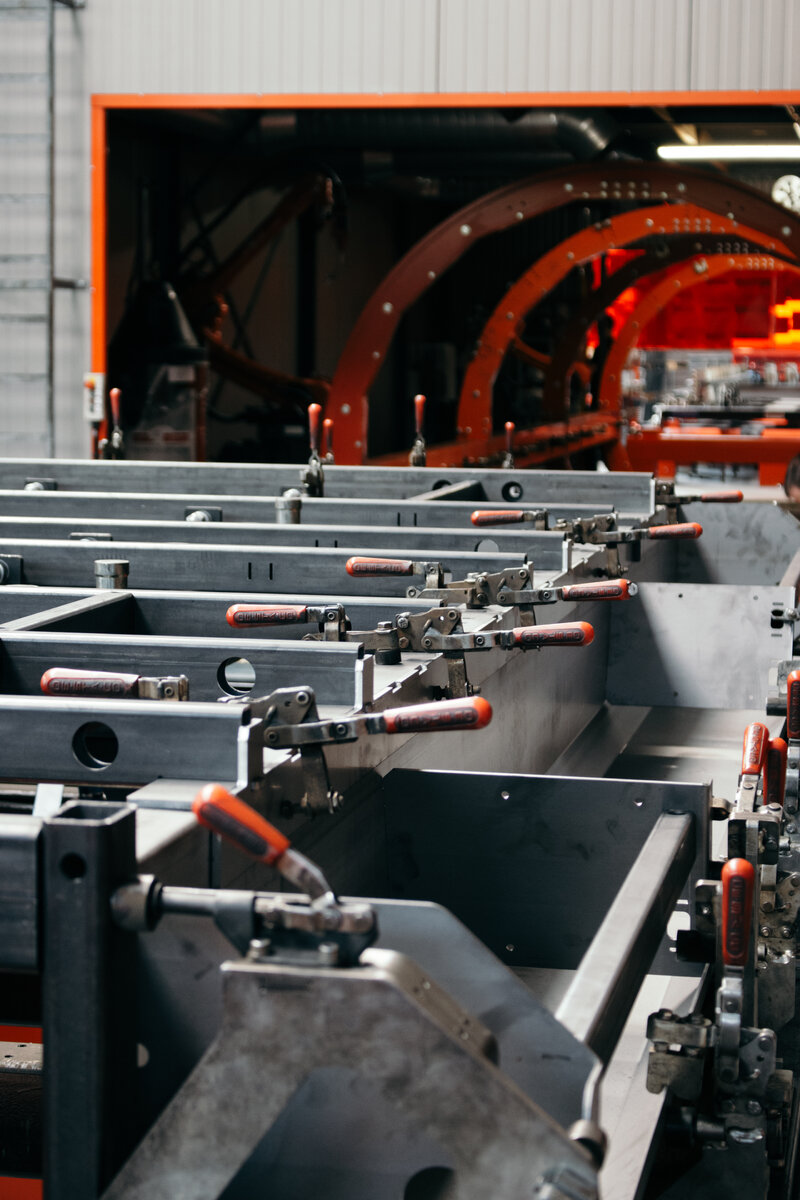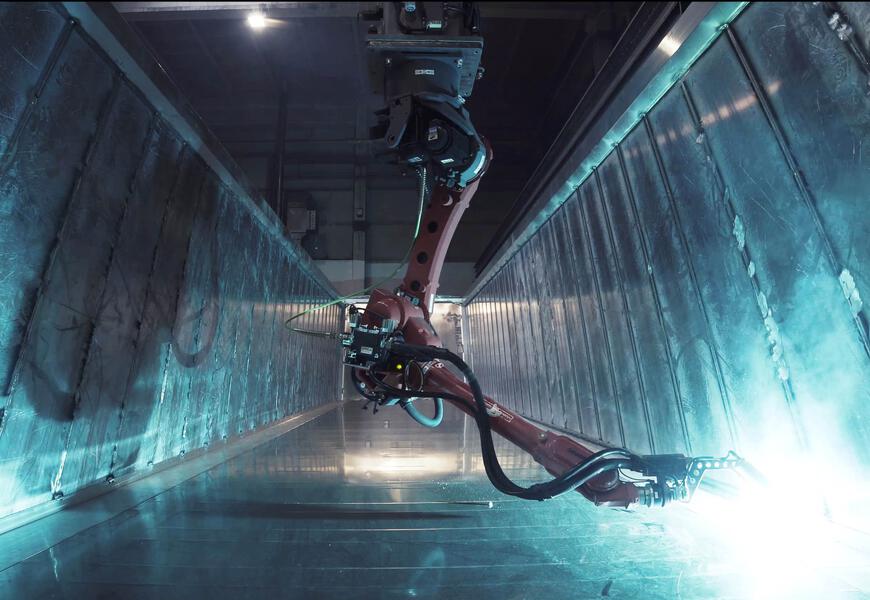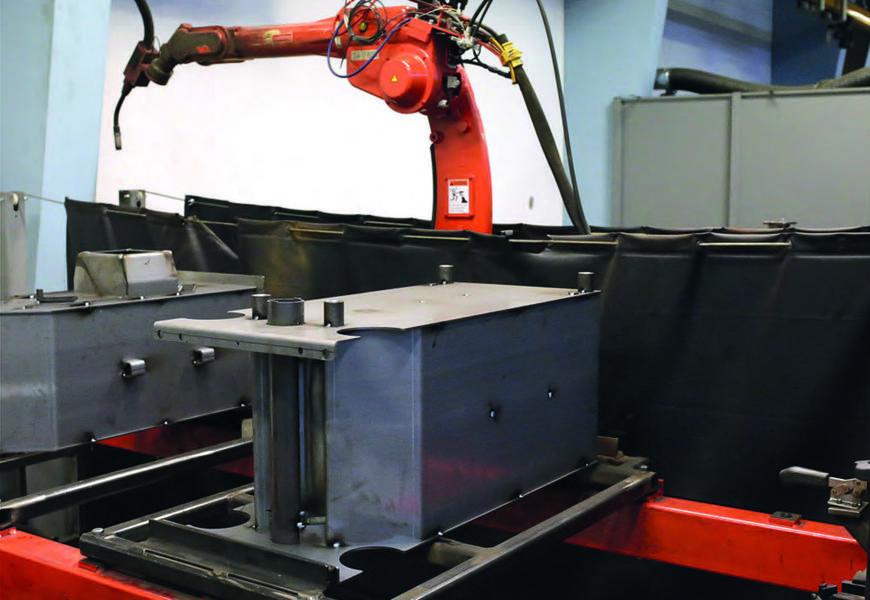Through over a hundred sales outlets spread throughout Europe, Vlemmix sells not only boat trailers but also trailers for Tiny Houses which are up to ten meters in length. ‘’That is where the biggest growth is at the moment. Our aim is to be able to weld these together in about twenty minutes, and standard boat trailers in eight to fifteen minutes. That’s a gigantic time saving when you consider that our trailers used to be welded by hand in six to seven hours. Before that happens, we still need to adjust a large part of the programs, because we are now welding with four welding robots instead of two,’’ says Bas Vlemmix.

